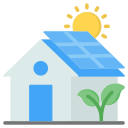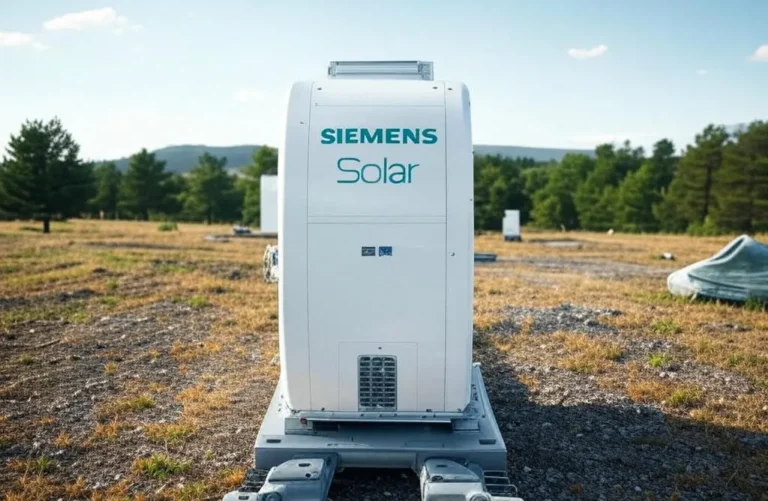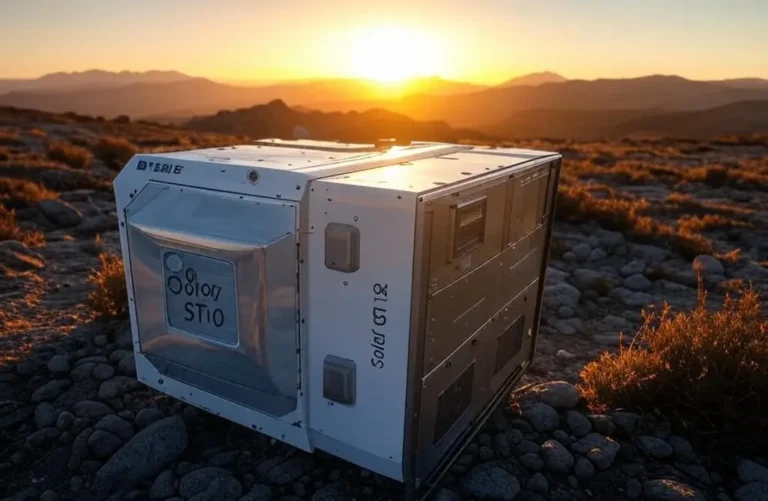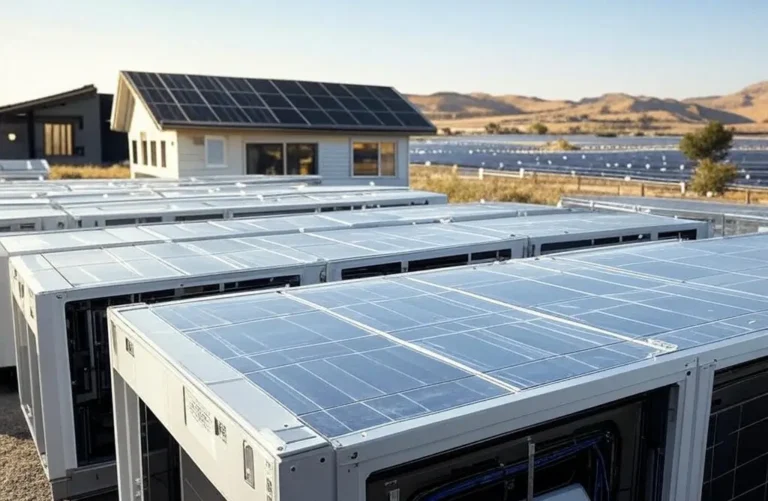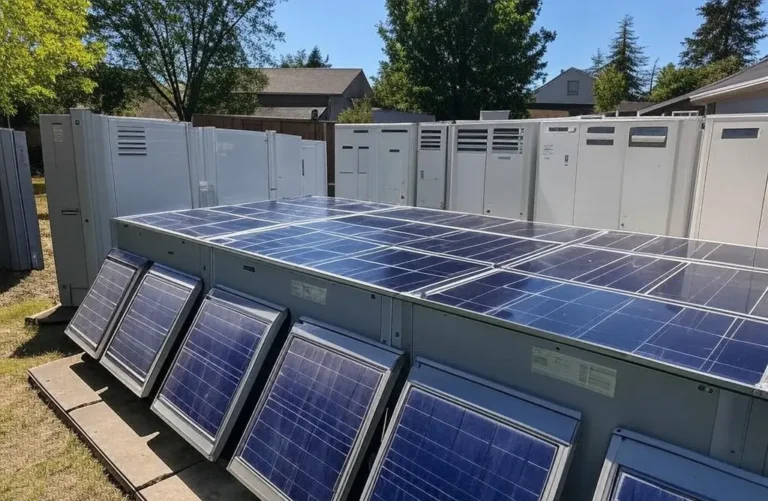Intelligent module design
36 PowerMax® solar cells form the heart of the module. These cells make optimum use of the module surface area. Thanks to their square shape, they are highly efficient and still provide the maximum power possible even under low light level conditions. The specially hardened front glass has excellent light transmitting properties and protects the module against most adverse environmental conditions such as hail or ice. The solar cells are laminated in EVA (ethylene-vinyl acetate) between a multilayer rear film and the front glass. This permanently laminated assembly protects the cells against moisture and ensures electrical insulation. A torsion-resistant module frame made of anodized aluminum guarantees particularly high mechanical strength.
| The SM55 and SM50 datasheets are also available in the Adobe Acrobat (.PDF) format. |
|---|
| Electrical Parameters (1) | SM55 (12V) | SM50 (12V) | |
| Maximum power rating | Pmax [Watts] | 55 | 50 |
| Minimum power rating | Pmin [Watts] | 50 | 45 |
| Rated current | Imp [Amps] | 3.15 | 3.05 |
| Rated voltage | Vmp [Volts] | 17.4 | 16.6 |
| Short circuit current | Isc [Amps] | 3.45 | 3.4 |
| Open circuit voltage | Voc [Volts] | 21.7 | 21.4 |
| Thermal Parameters | ||
| Nominal operating cell temperature (2) | [°C] | 45 +-2 |
| Change of Isc with temperature | – | +1.2mA/°C (+0.04%/°K) |
| Change of Voc with temperature | – | -0.0775 Volts/°C (-0.34%/°K) |
| Qualification Test Parameters | ||
| Temperature cycling range | [°C] | -40 to +85 |
| Humidity, freeze, damp heat condition | [% RH] | 85 |
| Maximum system voltage | [Volts] | 1000 per ISPRA (EC),600 per UL 1703 |
| Wind loading or surface pressure | [N/m²] (PSF) | 2400 (50) |
| Maximum distortion (4) | [degrees] | 1.2 |
| Hailstone impact withstand(diameter @ velocity) | [mm @ m/s](in @ MPH) | 25 @ 23(1.0 @ 52) |
| Physical Parameters | ||
| Number of series cells | count | 36 |
| Length | [mm] (in) | 1293 (50.9) |
| Width | [mm] (in) | 329 (13.0) |
| Depth | [mm] (in) | 34 (1.3) |
| Weight | [kg] (lbs) | 5.5 (12.0) |
| Warranty (5) | ||
| Power >= 90% of minimum power | [Years] | 10 |
| Power >= 80% of minimum power | [Years] | 25 |
- Determined under standard test conditions (STC): Irradiance = 1000w/m² cell temperature = 25 °C; solar spectral irradiance per ASTM E892 (Air Mass = 1.5).
- Determined under nominal operating conditions (NOC): Irradiance = 800 w/m² ambient temperature = 20 °C; wind speed = 1m/s.
- Qualification Tests performed as per CEC 503 Test Specification, to ensure durability and performance in outdoor conditions.
- Diagonal lifting of module corner with three corners fixed.
- To original consumer purchaser. See full Limited Warranty for all conditions.
Siemens Solar SM55/SM50: Efficient Modules for Residential and Off-Grid Use
Siemens Solar’s SM55 and SM50 modules are efficient, mid-range photovoltaic (PV) solutions delivering 55 watts and 50 watts, respectively, designed for residential rooftops, off-grid systems, and small commercial applications. These single crystalline modules, part of Siemens Solar’s foundational lineup, offer a balance of performance, durability, and versatility, making them a popular choice in early solar adoption. This article expands on the original SM55/SM50 page from our website, providing a detailed guide to their technology, specifications, installation options, benefits, and real-world applications, demonstrating Siemens Solar’s expertise in delivering reliable energy solutions for diverse needs.
A Cornerstone of Early Solar Adoption
The SM55 and SM50 emerged during a pivotal time for solar energy, with global capacity growing from 1 GW in 2000 to 100 GW by 2012. These modules, introduced in Siemens Solar’s early portfolio, catered to the rising demand for efficient, mid-sized PV solutions, powering homes and off-grid setups with consistent output. Their robust design made them a staple in regions with variable climates.
“The SM55 and SM50 set a standard,” says Dr. Hans Müller, Siemens Solar’s Legacy Product Lead. “They’re efficient and tough, perfect for homes and beyond.”
Why SM55/SM50?
- Efficient Output: 50-55 watts per module.
- Cost Savings: Saves $120-$250 yearly per kW installed.
- Sustainability: Reduces emissions by 0.6-1.2 tons per kW annually.
- Longevity: Built for 25+ years.
Technology Overview
The SM55/SM50 feature 36 PowerMax® single crystalline cells, a torsion-resistant anodized aluminum frame, and EVA-laminated construction for durability and moisture resistance.
Module Specifications
| Specification | SM55 | SM50 |
|---|---|---|
| Power Output | 55 watts | 50 watts |
| Efficiency | 15-16% | 14-15% |
| Size | 50” x 13” | 48” x 13” |
A 1 kW array (18-20 panels) generates 1,400-1,600 kWh annually, powering small homes or off-grid systems with a 5-10 kWh battery.
Installation Options
- Rooftop: For residential or small commercial roofs.
- Ground Mount: For off-grid or open spaces.
- Portable: Lightweight for temporary use.
Real-World Applications
Germany Home
A 1 kW SM55 array saves €200 yearly on a suburban home’s energy bill.
Kenya Off-Grid
Ten SM50 panels power a rural school, cutting emissions by 1 ton annually.
Benefits
Saves $120-$250 per kW yearly, offers flexible installation, and reduces environmental impact.
Future Vision
Siemens Solar leverages the SM55/SM50 legacy for next-gen modules targeting 26% efficiency by 2030.
